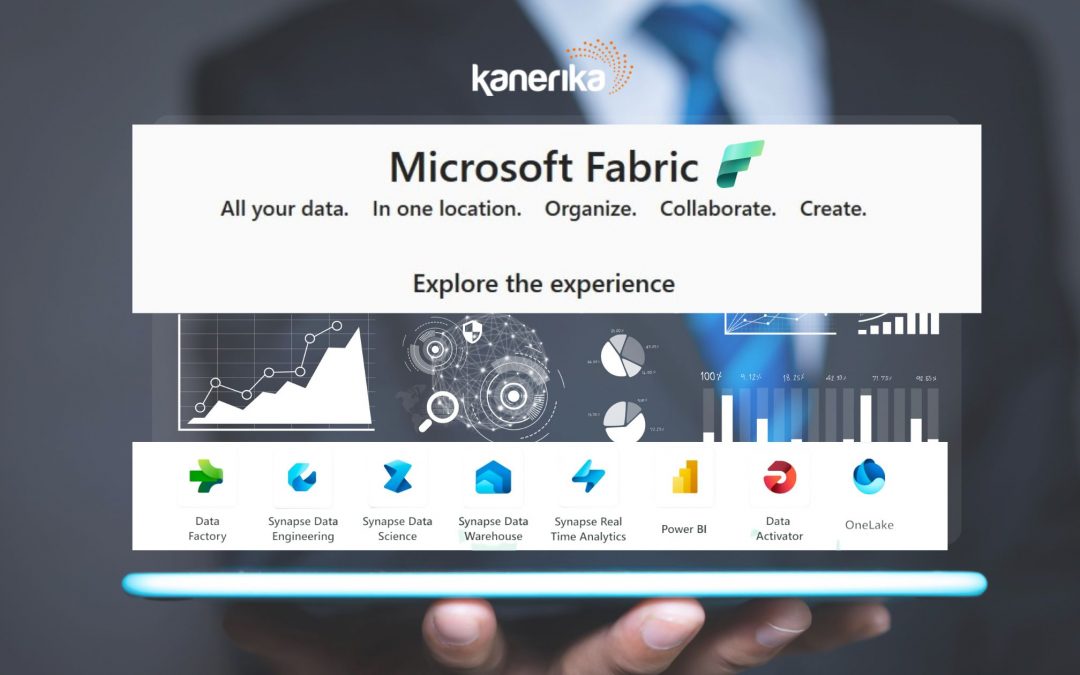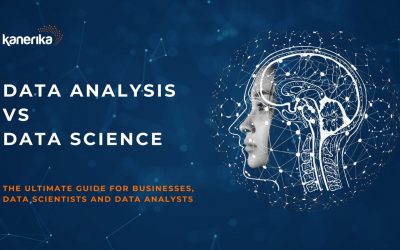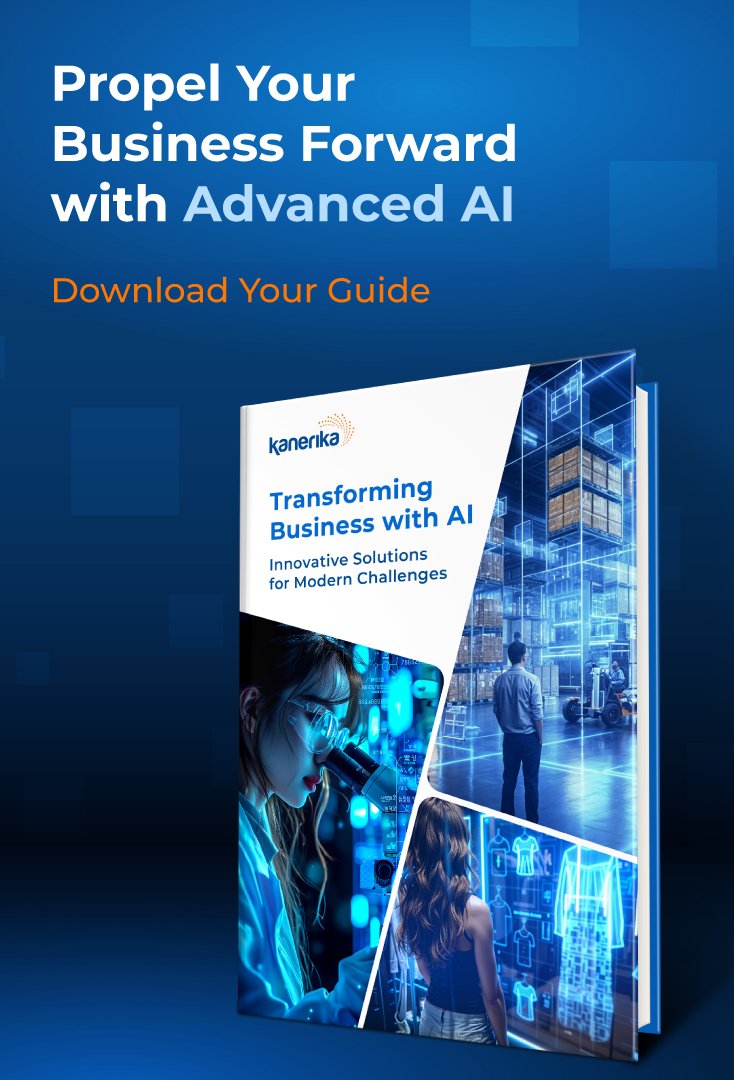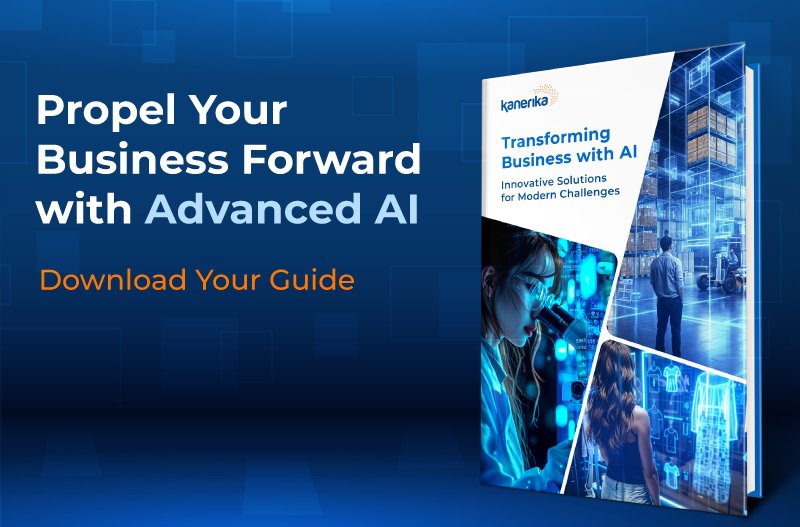“Where there is data smoke, there is business fire.” The words of business author Thomas Redman, popularly known as “Data Doc”, perfectly summarizes the symbiotic relationship between data analytics and successful businesses.
Data’s role extends beyond data engineers’ confines in our contemporary, data-driven landscape. Business users are now integral participants in data analysis, contributing to informed and agile decision making. This shift reflects the core mission of the expanding $30 billion data analytics industry: to infuse business decisions with speed and reliability.
Leading organizations like Microsoft, AWS, and Incorta have embraced this philosophy, continually refining their data tools to enhance accessibility and performance. Yet, a persistent challenge has emerged over the past five years: the fragmentation of data platforms.
Take Microsoft’s Power BI, for instance. While it has become the preferred BI tool for business users, thanks to its user-friendly design and insightful data-driven capabilities, the processes leading up to PowerBI have often remained obscured.
Enter Microsoft’s latest innovation, Fabric. This platform addresses the critical need for a cohesive ecosystem, all while preserving the agility that defines modern data analytics. Today, we will explore the transformative potential of Fabric, delving into how it streamlines data processes to accelerate business decision-making.
Table of Contents
- Microsoft Fabric: Engineered for Business Users and Agile Decision Making
- OneLake: The Core of Fabric’s Lake-Centric Approach
- Data Factory: A Seamless Integration Solution
- Benefits of Data Factory
- Fabric Works With the Best of Azure Synapse
- Data Engineering: The Lakehouse Advantage
- Data Warehouse: Embracing Open Data Formats
- Data Science: Bridging Data Teams Seamlessly
- Real-Time Analytics: Powering Advanced Visualization
- Power BI: A New Era of Accessibility and Efficiency
- Data Activator: Empowering Action Through Insight
- Microsoft Purview: A Shield for Data Security and Compliance
- Fabric’s Vision: A Unified Platform for Agile Decision Making
Microsoft Fabric: Engineered for Business Users and Agile Decision Making

Microsoft Fabric: Engineered for Business Users and Agile Decision Making
Source: Microsoft
In my previous article, we highlighted Fabric’s potential to outshine other cloud analytics tools, thanks to its user-centric features. A standout among these is Fabric’s adoption of a standard data format (Delta Parquet), coupled with an all-encompassing view of Microsoft’s suite of data tools. This unified platform fosters complete transparency across the data cycle, bridging the gap between data engineers and business users.
Let’s explore how each tool has been simplified and made accessible for business users, along with the enhanced security and ease of use promoted through Fabric’s ecosystem.
OneLake: The Core of Fabric’s Lake-Centric Approach
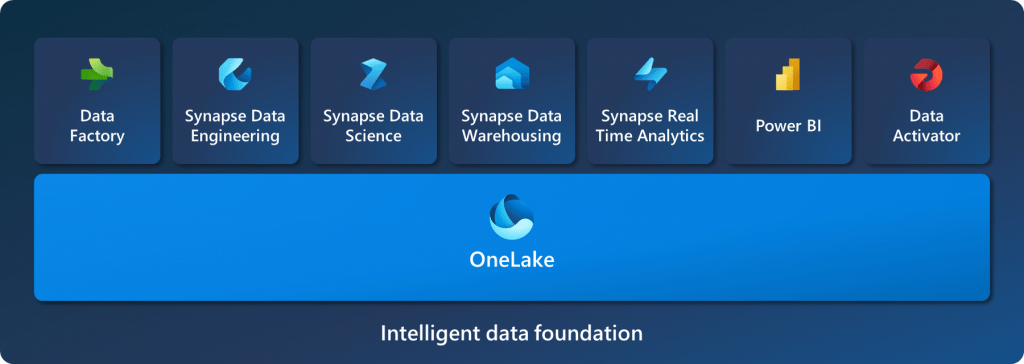
Source: Microsoft
Microsoft’s inaugural feature within Fabric, OneLake, serves as the central repository for all data utilized in the analytics process. Its functionality resembles OneDrive but is tailored to the unique needs of data management. It provides the following benefits:
- Unified Access: OneLake consolidates data into a single hub, accessible organization-wide. This centralization not only bolsters data security and governance but also obviates the need to navigate disparate platforms for data retrieval.
- Efficient Data Management: By eliminating data replication and utilizing a single copy across multiple processes, OneLake significantly curtails storage and server expenses. This efficiency translates into swifter data cycles.
- User-Friendly Discovery: The centralized OneLake hub simplifies data management and discovery. Business users, in particular, will find this feature invaluable, as it enables rapid access to the data required for decisive business actions.
Read More – What Is Microsoft Purview: The Key to Unlocking Effective Data Governance
Data Factory: A Seamless Integration Solution
Fabric’s Data Factory is a game-changer in data processing, offering an enterprise-scale integration solution tailored for business users. By merging the best features of Power Query and Azure Data Factory, it creates a unified platform capable of connecting to an extensive array of data sources. The result? Rich insights that drive smarter business decisions.
Benefits of Data Factory:
- Broad Connectivity: With access to over 170+ data stores, Data Factory ensures comprehensive reach.
- Next-Gen Power BI Dataflows: These scalable data flows enhance adaptability by being pre-loaded with 300+ data transformations, including AI-driven processes.
- Sophisticated Data Pipelines: Advanced pipelines enable users to execute multiple data integration processes, including ETL and ELT, in a user-friendly zero-code/low-code environment.
- AI-Powered Automation: Built-in AI accelerates common tasks, allowing data engineers to concentrate on vital processes while empowering business users to handle basic data integration.
Fabric Works With the Best of Azure Synapse
Fabric’s core system features a powerhouse system of tools similar to Azure Synapse that provides four critical data processes for gaining business insights. It enables users to extract insights from an organization’s data spread across data warehouses, data lakes, operational databases, and extensive data analytics systems. The following four tools are similar in functionality to Synapse.
Data Engineering: The Lakehouse Advantage
The Data Engineering lakehouse combines the concept of a data lake and warehouse, removing the friction and time delay associated with the ingestion, transformation, and sharing of data.
The highlight of this process is its utilization of an open format, Delta Parquet, allowing the data to be read and transformed effortlessly by other tools in the Fabric ecosystem.
The Synapse Data Engineering public preview currently includes Spark 3.3.1, Delta 2.2, and Python 3.10, all pre-installed and configured for the convenience of Fabric users.
Data Warehouse: Embracing Open Data Formats
With Data Warehouse, Fabric achieves a milestone – becoming the first transactional data warehouse to support an open data format. This collaboration enables data engineers, IT teams, and business users to extract insights from their data by accessing the same Fabric ecosystem.
This not only enhances data governance and security but also ensures that business users can gain data insights without relying on their IT team, significantly reducing the time taken to make key business decisions.
Data Science: Bridging Data Teams Seamlessly
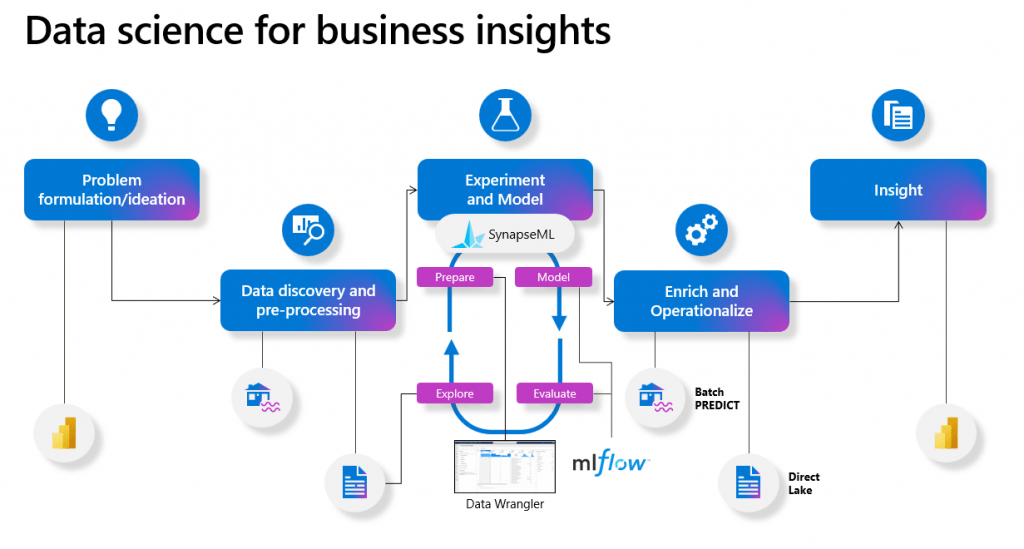
Source: Microsoft
Data Science illustrates Fabric’s recurrent theme of a standard data format and a unified data ecosystem. Fabric allows data science professionals to work on top of the same secured data that was earlier prepared by the data engineering team.
This approach eliminates data replication and directly provides data access to the team, who no longer have to copy and transfer files. Data science professionals are further given access to user-friendly flows and low-code experiences with Visual Studio Code and Notebooks.
On-Demand Webinar: Field Parameters | Make Microsoft Power BI More Dynamic
Real-Time Analytics: Powering Advanced Visualization
Through Real-Time Analytics, Microsoft Fabric offers users an optimized big data analytics platform. This enables data loading, data transformation, and advanced visualization scenarios.
This feature is particularly beneficial for services that require access to data with low query latency or need to search or access data in various formats such as unstructured (e.g., free text), semi-structured (e.g., JSON or other arrays), or structured data. Industries that stand to gain the most from utilizing Real-Time Analytics include:
- Finance and Banking
- Manufacturing Operations
- Automotives
- Transportation and Logistics
- Oil and Gas
Power BI: A New Era of Accessibility and Efficiency
Power BI has been a driving force behind Microsoft’s prominence in the data analytics industry. Adored for its simplicity and user-friendliness, Power BI has set a standard that Fabric seeks to emulate and expand. The goal is to extend this ease of accessibility across the entire data analytics cycle, transforming how businesses interact with data.
The addition of Microsoft Copilot is the most unexpected and innovative addition to Power BI. With Copilot, users can now create data reports in mere seconds, generate DAX calculations, pose questions about their data, and craft summaries—all through the capabilities of an LLM-powered AI system.
This integration elevates Fabric’s power. Thus, making it even more accessible to business users who can rely solely on Copilot to extract all the data insights they need from the Fabric ecosystem. The potential time and resource savings for businesses are immense. Especially considering how labor-intensive and time-consuming the processes were before Fabric’s introduction.
The synergy between Power BI and Fabric represents a transformative approach to data analytics. It’s not just about providing tools. It’s about creating an intelligent, cohesive, and user-centric environment where data becomes a tangible asset that drives agile decision making. By following these principles and integrating the Azure suite of tools with Power BI, Microsoft offers an unparalleled package to existing Power BI customers while also aiming to attract new users to the ecosystem.
Data Activator: Empowering Action Through Insight
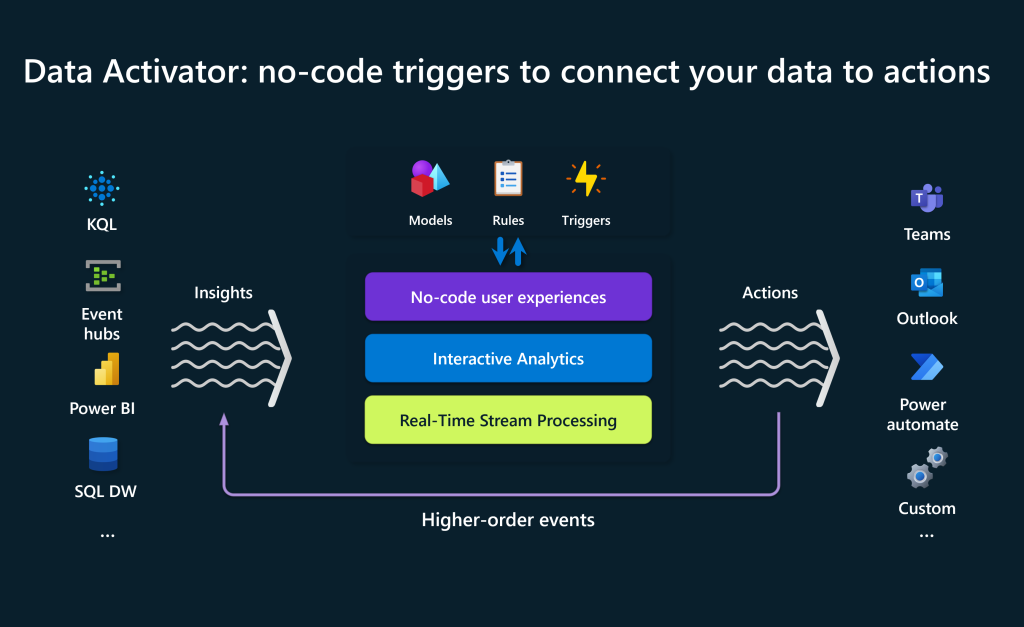
Source: Microsoft
Microsoft Fabric envisions a data ecosystem that connects all the integral users of an organization. The role of data analytics is not just to gain business insights. But to convert those insights into actionable items that can benefit an organization.
The industry previously leaned on third-party automation tools to track business processes. These tools, while functional, were often expensive, cumbersome, and inefficient. They demanded extensive coding knowledge, putting them out of reach for many business users.
Fabric solves this problem by adding a no-code tool in the form of Data Activator. It empowers business users and analysts to automatically derive actionable insights from data, bridging the gap between data and decision-making. Data Activator can act on all kinds of data. From data sources as diverse as slow-moving data from warehouses to real-time streaming data in Event Hubs.
Sales, operations, and IT teams can now work cohesively on Data Activator. It prioritizes and resolves action items based on intelligent data analysis through Fabric’s integrated tools.
Microsoft Purview: A Shield for Data Security and Compliance
One of the most pressing challenges for the industry has been the vulnerability to external breaches. The scattered ecosystem, comprised of tools from various companies with differing data loss prevention protocols, has often led to frequent and costly data breaches. Microsoft, recognizing this pain point, designed Fabric with security at its core.
OneLake serves as a common data storage point. Similarly, Microsoft Purview is integrated into Fabric to provide scalable governance and compliance capabilities.
Here’s how Purview helps enhance data security:
- Persistent Sensitivity Labels: Purview ensures that sensitivity labels remain intact throughout data transfers from the lakehouse to Office through Fabric. This continuity safeguards the data’s classification and handling.
- Automated Detection of Sensitive Data: By focusing on data loss prevention policies, Purview automates the detection of sensitive information. Additionally, adding an extra layer of security.
- End-to-End Auditing: Comprehensive auditing capabilities provide a transparent and accountable data handling process, reinforcing trust in the system.
- User-Friendly Data Catalog: Microsoft has plans to release a Purview data catalog, enabling users to browse and search for specific Fabric data assets within an intuitive interface. This not only makes Purview accessible but also enhances data transparency for business users.
Fabric’s Vision: A Unified Platform for Agile Decision Making
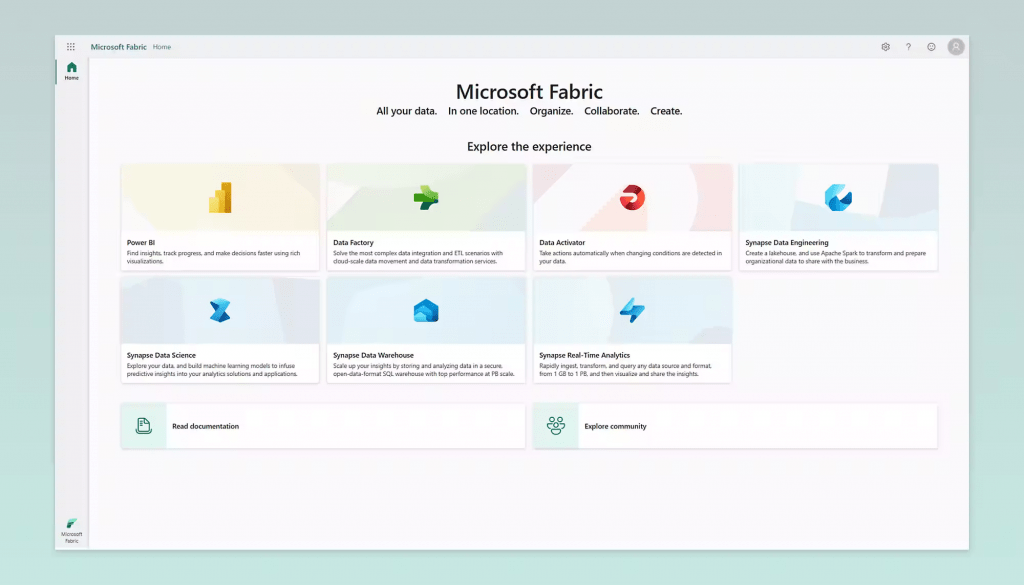
Source: Microsoft
Microsoft’s strategy with Fabric is both visionary and simplistic. It’s not just about creating another tool in the crowded data analytics landscape. It’s about transforming the way organizations perceive and interact with data. Microsoft Fabric aims to democratize data analysis by presenting an accessible, unified AI-Powered platform.
Fabric is designed to be managed and used by users at all organisational levels, from data engineers to business analysts. This leads to more efficient data cycles within organizations and drives agile decision making.
Such has been the positive response to Fabric that Microsoft extended its free preview usage from August 1 to October 1, 2023. This extension allows both existing and new businesses to explore Fabric’s features and assess its utility in their operations.
While author Tim O’Reilly famously said, “We’re entering a new world in which data may be more important than software,” Microsoft Fabric reminds us that data, though abundant, cannot drive success without the right software to analyze it.
In pursuing agile, data-driven agile decision making, businesses must see simplicity and efficiency as the cornerstones of their data analysis strategy. Though still in its infancy, Fabric is a clear testament to Microsoft’s commitment to making data analytics accessible to a broader audience

